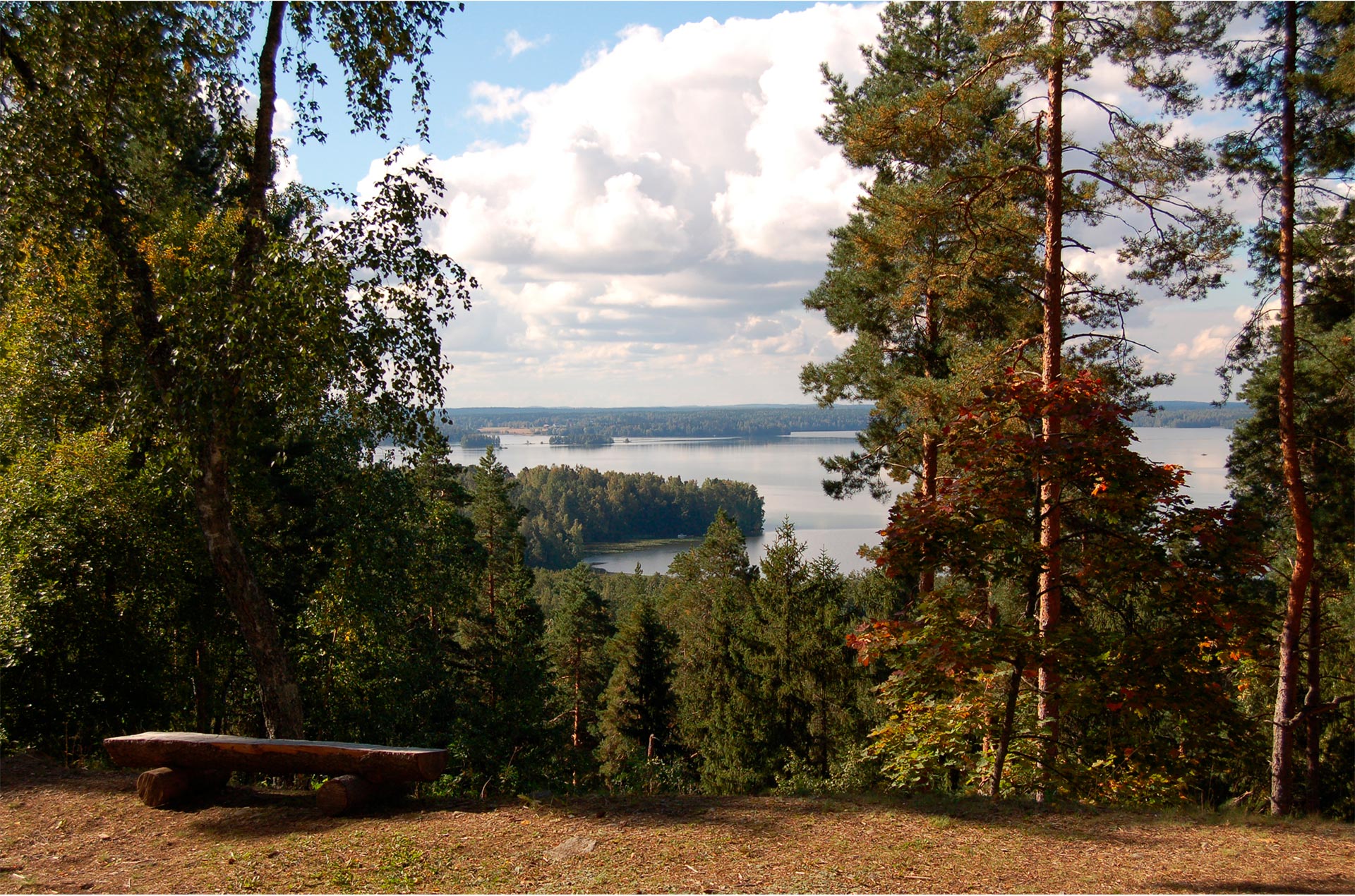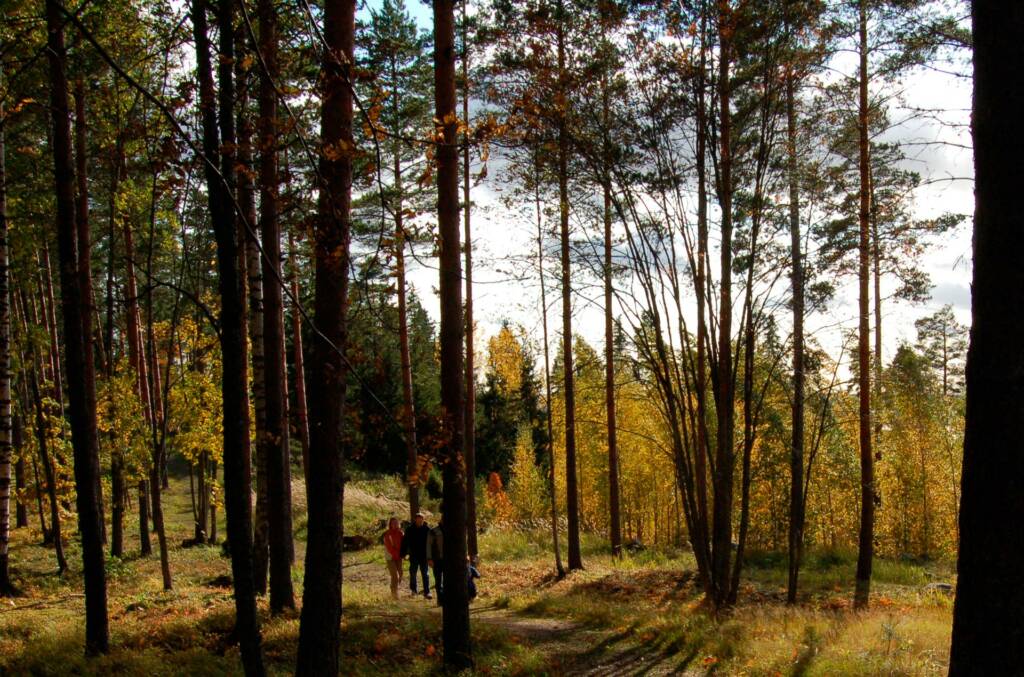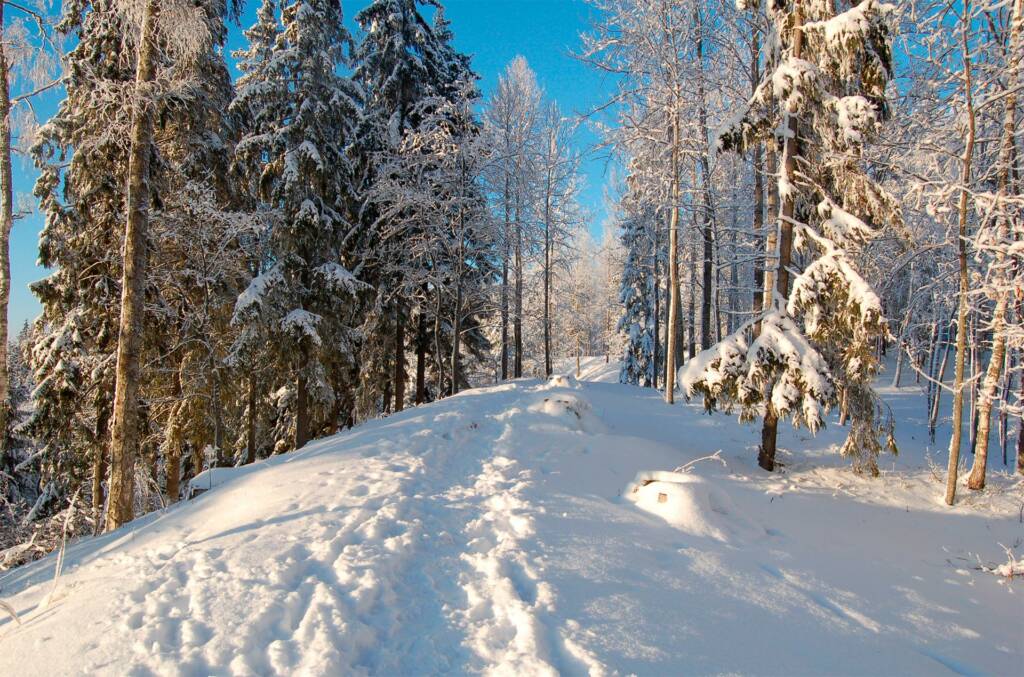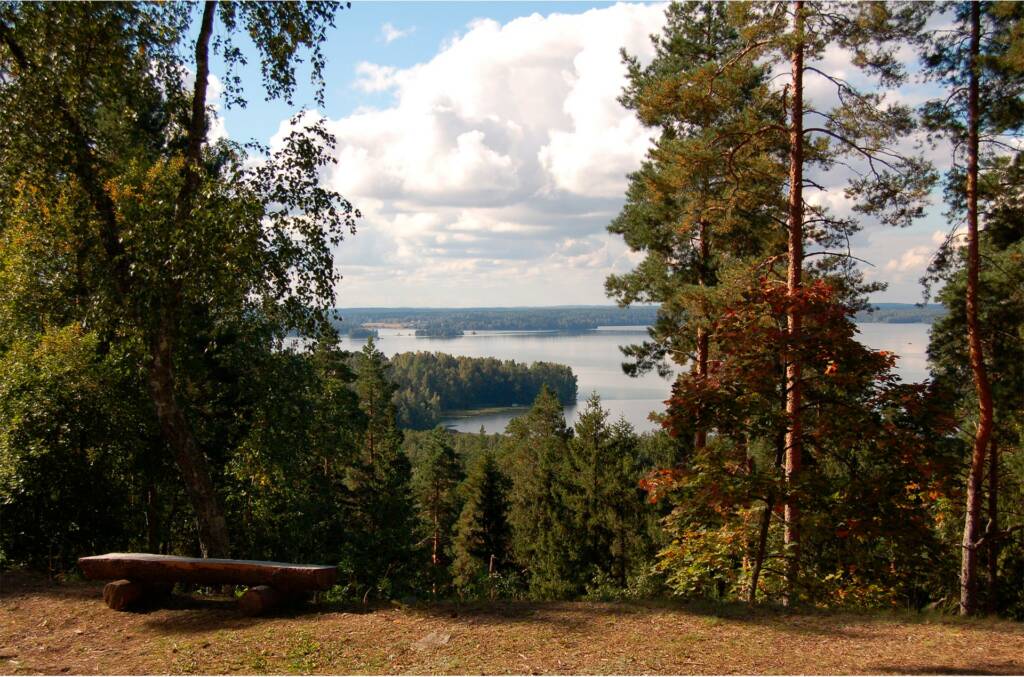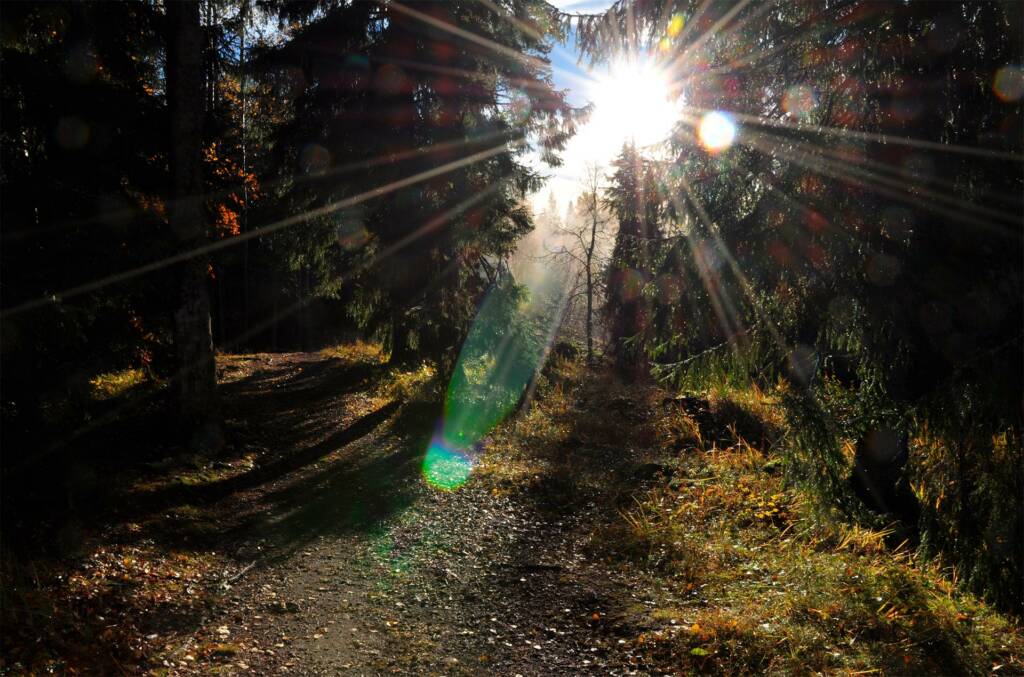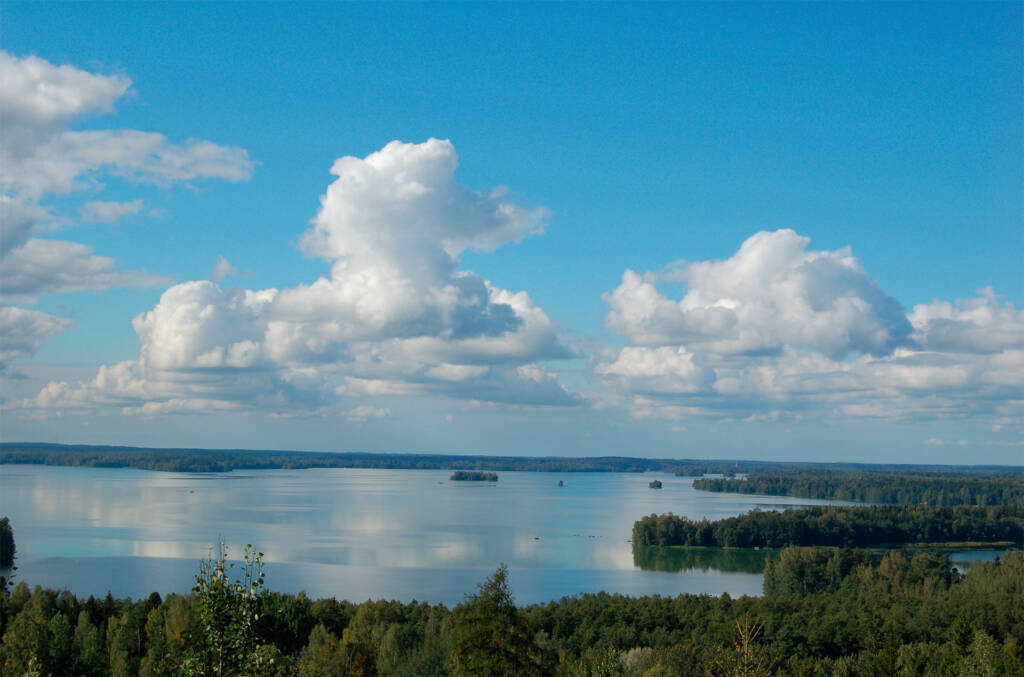Environment and history
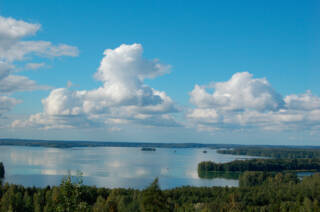
Rapola Ridge
The manor and the surrounding parks are located on the slopes of the Iron Age Rapola ridge.
Rapola Ridge
This trail, which differs clearly from other nature paths in the area, follows the Rapola ridge at Sääksmäki, about 8 km from the centre of Valkeakoski. The 1.6 km long trail starts from the Voipaala Art Centre and follows the edge of the ridge, circling two large depressions. In addition to the nature of the ridge and the beautiful landscape, there are also small grove areas, primeval spruce woods, and prehistoric finds.
The Rapola ridge is one of the most important prehistoric hill forts in Finland, which were in use at least during the period 800 – 1250 AD. On the upper slopes of the ridge a large number of dwelling places, cooking pits, and other signs of habitation have been found. Closely adjoined to the hill fort on the South Western slope is a large area with numerous finds. There are, among other, a burial ground with over hundred barrows (tumuli), and an ancient field from the Iron Age, found in excavations in 1988. Likewise coherently linked to the hill fort is an ancient harbour, at the bottom of the Saunalahti bay.
The many centuries of habitation on the slopes of the Rapola ridge has left its marks on nature, particularly on the vegetation. The manors of Rapola and Voipaala in the vicinity of the fort have had an even greater influence since their founding around the 16th century. From the parks and cultivated lands of these estates many cultivated plants have been transferred to the slopes of the ridge with the help of birds and squirrels. Examples of such plants are celandine, dogwood, lilac, larch, rowan, maple and oak, all of which grow in large numbers on the slopes of the ridge. Most of the slopes are closed and shadowy, and that´s why such typical species for ridges that demand plenty of light are very scarce in the area. Often their last habitats are old gravel pits, of which there are many at Rapola. In general it can be said that gravel pits are the most visible “monuments” that man has left on the ridge.
The path is relatively easy to walk. The height difference is nevertheless big enough to make it difficult for the youngest and oldest wanderers. Also it is good to know that there might be some vipers, so it is better to wear sneakers than sandals.
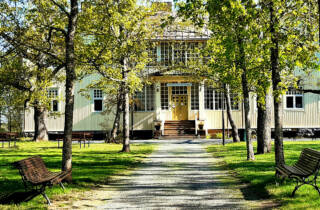
Voipaala Manor buildings and park
In Voipaala you can walk around in a beautiful baroque park and admire buildings from different eras.
Voipaala Manor buildings and park
Voipaala Manor
Built in 1912 the manor represents Art Noveau-style architecture. The manor has 400 sq.m. of space for exhibitions and a rustic café serving delicious, homebaked cakes! The history room can be rented for private events, hosting up to 30 guests.
Bakery
Dating back to 18th century, the bakery is the oldest building around Voipaala. Today it contains office space for companies and organizations.
Workers´ quarter
Art classes and studying groups take place in the old workers´ quarter throughout the year. An Italian style day spa for relaxing treatments situates at the other end of the building.
Ilkka Atelier
The last private owner of the Voipaala mansion, sculptor Elias Ilkka renovated the building to serve as his private atelier. Today the atelier is a summer exhibition space for a local art association.
Cowshed
Originally built in 1927. Nowadays it is a rentable event venue, renovated 2017.
Granary
The heated end of the granary is used for textile workshops and teaching. The cold end is used as an exhibition space in the summertime.
Stable
During summertime you can visit the stables to see an exhibition about Rapola ridge’s history and nature. The exhibition “Rapalum” is composed by the National Board of Antiquities. The path to Rapola ridge starts beside the stable.
Grain Dryer
The Grain dryer was designed by sculptor Elias Ilkka and built in the 1950’s.
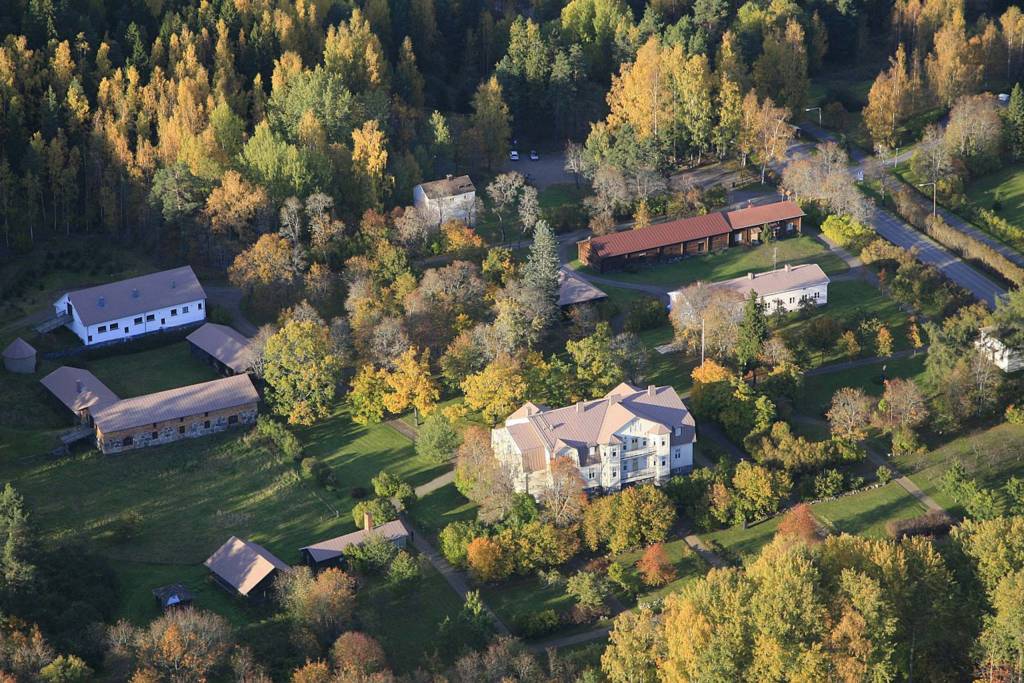
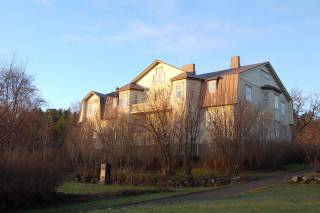
History
The Voipaala Manor in Sääksmäki dates back to the Middle Ages.
History
First There Was Water
First there was water. Water flowed through the deep crevasses of the glacier shaping ridges. Water was collected in depressions in the landscape forming lakes. Water flowed from uplands to lowlands creating waterways. The first people arrived by boat and built their dwellings on the best sites.
Stone Age man found a place for his hut at the foot of the ridges, on the gentle shores of Lake Vanaja. Already more than 2500 years ago, dwellers who began to cultivate land enjoyed the benefit of a temperate climate that rather resembled the conditions on fruitful coasts in Southwestern Finland.
Fishing grounds and water connections were especially good in the Sääksmäki area where three waterways converge: “Vanantaa” (Beyond Lake Vanaja”) from the South, Lake Hauho from the Northeast and Lake Längelmävesi from the North. They all flowed into the River Kokemäenjoki and finally emptied into the sea. The Southern sea was also easy to reach through a network of waterways with only a few short stretches where men had to pull their boats over dry land.
A longitudinal ridge reaching from Lempäälä to the Hämeenlinna region formed so-called ridge dikes. These ridge dikes served as a foundation for the great prehistoric Rapola fort that was built for the protection of the area more than 1000 years ago.
Great Sääksmäki
In this way the ancient centre of Sääksmäki and the Häme region was born. In addition to the area today known as the town of Valkeakoski, a great number of other villages in the region belonged to Great Sääksmäki. The present stone church of Sääksmäki was built at the end of the 15th century, but some remarkable wooden sculptures still remain from an older church. The sculptor of these pieces of art is known as the “Master of Sääksmäki” in the Finnish art history.
The importance of Sääksmäki in the Middle Ages can also be seen in some documents such as the oldest written mention of the villages of Rapola and Voipaala, a papal bull from the year 1340, in which Pope Benedict XII ratified the excommunication of 25 yeomen of Sääksmäki who had refused to pay tithes. The village sites of Rapola and Voipaala are adjacent to each other and they appear to have originally been a one single village.
Voipaala through centuries
16th century
Owner: The Särkilahti family
In 1530 Paavali Särkilahti became the Vicar of Sääksmäki. The Särkilahti family gathered mansions in Voipaala and Rapola as well as in other parts of Sääksmäki. Paavali´s son, Timoteus Särkilahti started to buy land from peasants in the village of Voipaala. His son, Johan continued family’s era.
17th century
Owner: The Ruuth family
Kirsti, Johan Särkilahti´s daughter, married Pietari Ruuth who was the King’s man in Voipaala during 1609–1612 and a Prosecutor in Sääksmäki in 1614. Pietari Ruuth is buried in Sääksmäki church. His sons were conferred a title of nobility under the name oh Ruthenhjelm. The Voipaala Manor was destroyed in fire in 1619. Most probably after this fire the manor was rebuilt on its present site.
18th century
The Ruthenhjelm period lasted until 1723 when Gustav Ruthenhjelm died. After that there were several owners of Voipaala: Pajkul, Ignatius, Voivalenius, Jansson and Gripenberg families.
Owner: The Gripenberg family
During Hans Gripenberg’s time Voipaala area was rebuilt. In 1791–1792 a new manor in four storeys was built. There were 17 rooms and 67 windows. The buildings and the yard were designed symmetrically and according to a map from 1795 there were 33 different buildings in Voipaala Garden. The garden was designed in a geometrical style after a Middle European manner.
19th century
Odert Henrik Gripenberg inherited Voipaala in 1813. In 1818 he founded a boarding school for boys and followed the methods of Swiss educator Johan Heinrich Pestalozzi. Alexander I, the Russian Tsar, visited this school during his visit to Finland in 1819.
In 1823 became Johan Ulrik Sebastian Gripenberg, the brother of Odert, the master of Voipaala. Sebastian Gripenberg was an idealistic man with ambitious attempts on sugar beet cultivation. In 1837 he built a sugar factory, the first one in Finland. But as the money ran short and a proper storage could not been built, the roots were spoiled. The factory and the whole Voipaala estate ran into financial difficulties and had to be auctioned in 1842.
As a whole the Gripenberg family was especially idealistic and innovative and during their period Voipaala had its most flourishing years.
Owner: The Nervander family
In 1842’s auction Mrs. Maria Hellstein bought Voipaala. She remarried in 1845 and her new husband, Bror Frans Wilhelm Nervander, demolished Voipaala manor as it was too high in his opinion. Nervander was afraid that it might be blown down by the wind.
In the late 1850’s a great interest in the theatre arose among Finnish students and young people from upper classes. The Nervander family had many relatives who had influence on Finnish cultural life. Among these was Emil Nervander, the nephew of Wilhelm Nervander. Emil Nervander was a well known art historian and a lyric poet. These young enthusiasts gathered often together in Voipaala and theatre plays, first in Swedish, later also in Finnish, were shown in the loft of Voipaala stable.
Changing owners
As Maria Nervander was widowed again she later sold Voipaala to Gustav Robert Costiander in 1816. Further it was sold in 1880 to Karl Oscar Willgren, one of the two owners of the Walkiakoski paper factory. But he died already in 1882 and the next year the manor was sold to Johan Nordling, who owned Voipaala until 1895, when Waldemar Nieminen purchased the manor.
20th century
Voipaala main building was destroyed again in fire in 1908. The present manor, planned by Heikki Tiitola, is built in Art Nouveau style in 1912 on the same stone foundation as the burned one.
The interior in entrance hall with wooden fixtures, which have been preserved during the restoration, are by local carpenter Kalle Vaara. The beautiful glazed tile fireplaces were made of rest pieces of Tampere Tile Factory (Tampereen kaakelitehdas) and the mason was called Lammervo.
In 1908 Elias Ilkka, a sculptor, arrived from Jalasjärvi to study under Emil Wikström’s supervision and probably then visited Voipaala for the very first time. Later on, in 1941 Elias Ilkka married Helvi Voipaala, Waldemar Nieminen´s daughter. Helvi had previously taken the name Voipaala as her family name. During Helvi and Elias Ilkka’s time a special attention was given to the beautiful garden and experiments of new exotic plants were made. Elias Ilkka repaired the old white storehouse for grain as his own studio for sculptural work. As Elias Ilkka died in 1968 Mrs. Ilkka and their son moved from the main building into one of the small houses in the yard.
Owner: City of Valkeakoski, Cultural Services
The town of Valkeakoski hired the main building in 1977 and the house was renovated suitable for art exhibitions. Some of the Art Nouveau fixations were unfastened and the room order was altered.
Voipaala manor main building was further hired to the Union of Finnish Art Associations for art exhibition purposes 1977–1990. Also their office was situated in Voipaala.
In 1985 Valkeakoski purchased the whole Voipaala area and the Union of Finnish Art Associations moved away from Voipaala. In autumn 1989 the Voipaala children’s culture center was founded by art educator Maria Laukka, who managed Voipaala until 2005 organizing art exhibitions, seminars and courses within art pedagogy and children´s culture.
In 2006 Voipaala started to develop forward as a cultural center under the name of Voipaala Art Centre, when more of the communal cultural services at Sääksmäki were focused to the Voipaala area. Development has taken on new forms in the 21st century. Art is still at the center of activities, but now premises are also rented for various events, markets are organized in the area twice a year and also different entrepreneurs provide cafeteria and wellbeing services in Voipaala.

